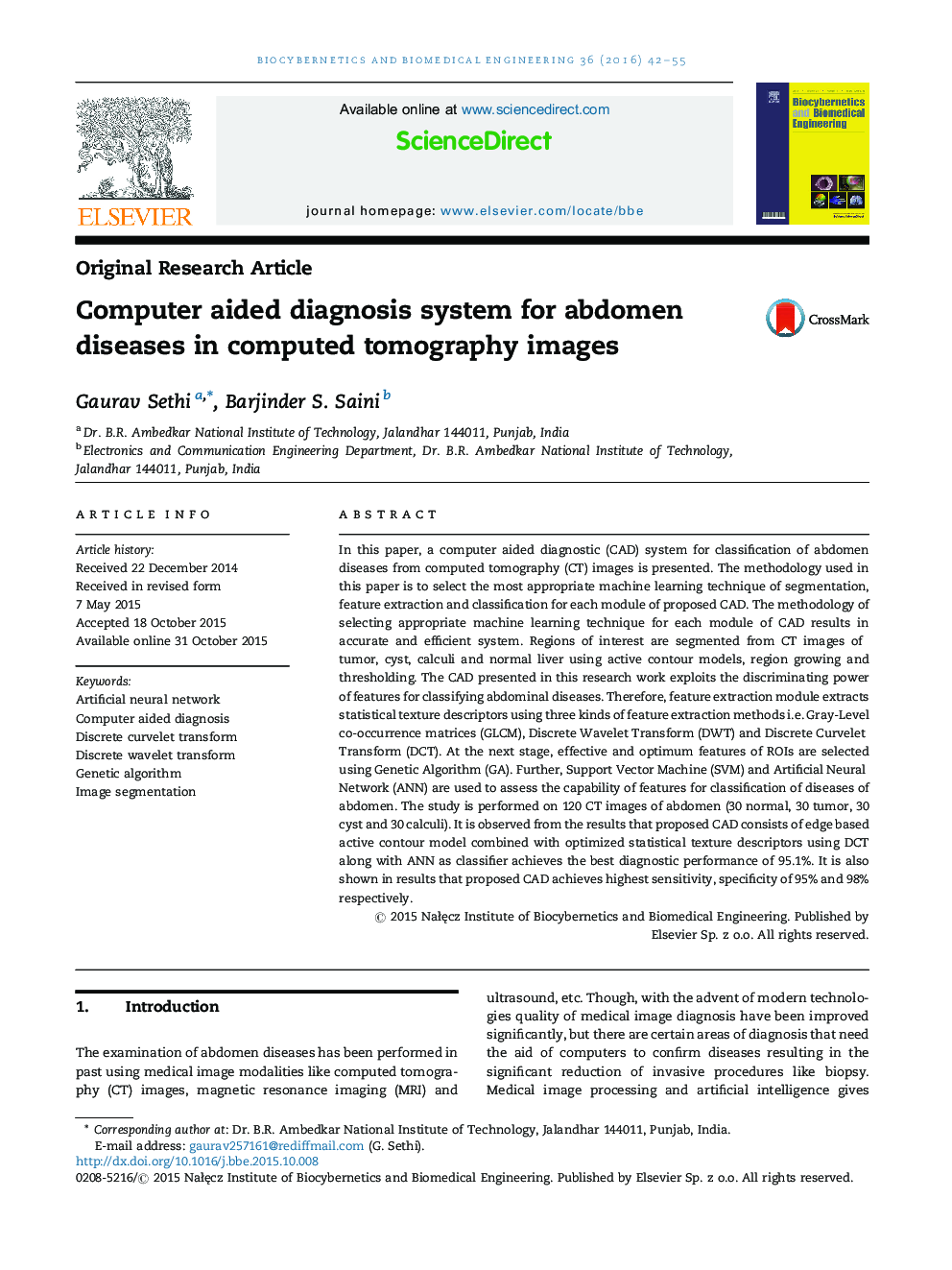| Article ID | Journal | Published Year | Pages | File Type |
|---|---|---|---|---|
| 5108 | Biocybernetics and Biomedical Engineering | 2016 | 14 Pages |
In this paper, a computer aided diagnostic (CAD) system for classification of abdomen diseases from computed tomography (CT) images is presented. The methodology used in this paper is to select the most appropriate machine learning technique of segmentation, feature extraction and classification for each module of proposed CAD. The methodology of selecting appropriate machine learning technique for each module of CAD results in accurate and efficient system. Regions of interest are segmented from CT images of tumor, cyst, calculi and normal liver using active contour models, region growing and thresholding. The CAD presented in this research work exploits the discriminating power of features for classifying abdominal diseases. Therefore, feature extraction module extracts statistical texture descriptors using three kinds of feature extraction methods i.e. Gray-Level co-occurrence matrices (GLCM), Discrete Wavelet Transform (DWT) and Discrete Curvelet Transform (DCT). At the next stage, effective and optimum features of ROIs are selected using Genetic Algorithm (GA). Further, Support Vector Machine (SVM) and Artificial Neural Network (ANN) are used to assess the capability of features for classification of diseases of abdomen. The study is performed on 120 CT images of abdomen (30 normal, 30 tumor, 30 cyst and 30 calculi). It is observed from the results that proposed CAD consists of edge based active contour model combined with optimized statistical texture descriptors using DCT along with ANN as classifier achieves the best diagnostic performance of 95.1%. It is also shown in results that proposed CAD achieves highest sensitivity, specificity of 95% and 98% respectively.
